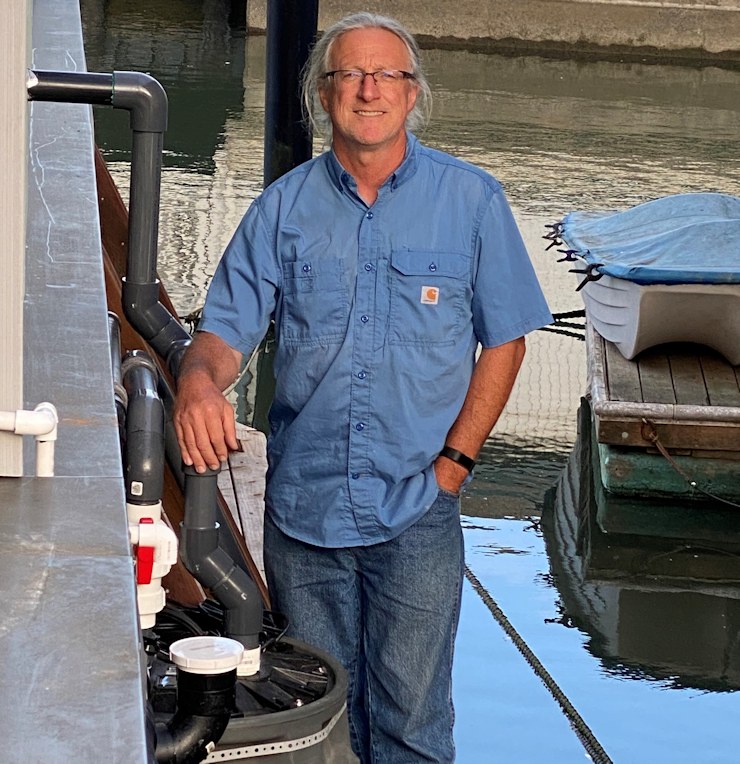
Our flight had been delayed, so we got home to Main Dock around 9:00 pm. The young German couple who had been housesitting left a lovely note saying how much they enjoyed our cats and their two-week stay on a Sausalito houseboat. In the right-hand bottom corner of their note, next to smiley face, were the words: “there may be a small leak in the plumbing.”
I went downstairs to the holding tank closet and everything looked normal—no water on the floor and no obvious leaks. I did notice our ejector/macerator pump was buzzing, which meant it was on but not pumping. As I reached over to unplug it, I looked down between the floor and the tank and saw what every floating home owner dreads: water in the hull. Removing the access hatch for a better look, I realized it was not just water but raw sewage . . . lots of it.
A quick recap: home from a two-week vacation, it is 9:00 p.m., the kids are tired, the ejector pump has seized, the holding tank has overflowed, and the center section of our hull is filled with about 1 foot of wastewater and sewage.
Now what?
After we got the kids to the neighbors, I went to Home Depot (always open until 10 p.m.) and purchased a large garbage can, a sump pump, a garden hose, safety glasses and long thick rubber gloves. I wrestled the ejector pump out of the holding tank to find the impeller tightly wrapped with paper towels. Not just a few sheets, but a 4 ½ foot “rope” of tightly twisted, sewage–soaked paper towels. Thankfully, the macerator pump still worked so I reinstalled it and rigged a system to drain the hull through our holding tank. The process took hours, but when it was done (about 3:00 a.m.), I had pumped about 1,000 gallons of sewage out of the hull. Drying the hull, however, took several more days of using fans to circulate air in the crawl space under the floor.
The paper towels that our guests flushed down the toilet did not get chewed up in the macerator and eventually caused the pump to seize. With the pump no longer working, each time they took a shower, washed dishes, or used the toilet, the wastewater overflowed out of the holding tank lid and seeped into the hull; this must have gone on for days. I should note that more modern sewage/macerator systems are contained in sealed holding tanks and are equipped with alarms; our system was not that modern.
But a catastrophe can foster valuable lessons:
- Make sure that you, your house guests, and renters understand how your sewage system works.
- If your sewage system does not have one, install an overflow alarm and make sure your guests know what the warning light means.
- Never flush paper towels, rags, sanitary napkins, or other fibrous material down your toilet.
- If you find water or sewage in your hull, your ejector pump/macerator system can be used to pump it into the dock sewer system using a sump pump and a hose.
- The FHA Disaster Response Trailer is equipped with a high-capacity electric sump pump (generously donated by Tony Williams). In an emergency, contact your FHA dock rep for trailer access.
- It is against the law to pump into, or to allow sewage or wastewater to enter, Richardson Bay.